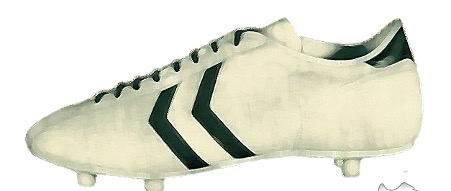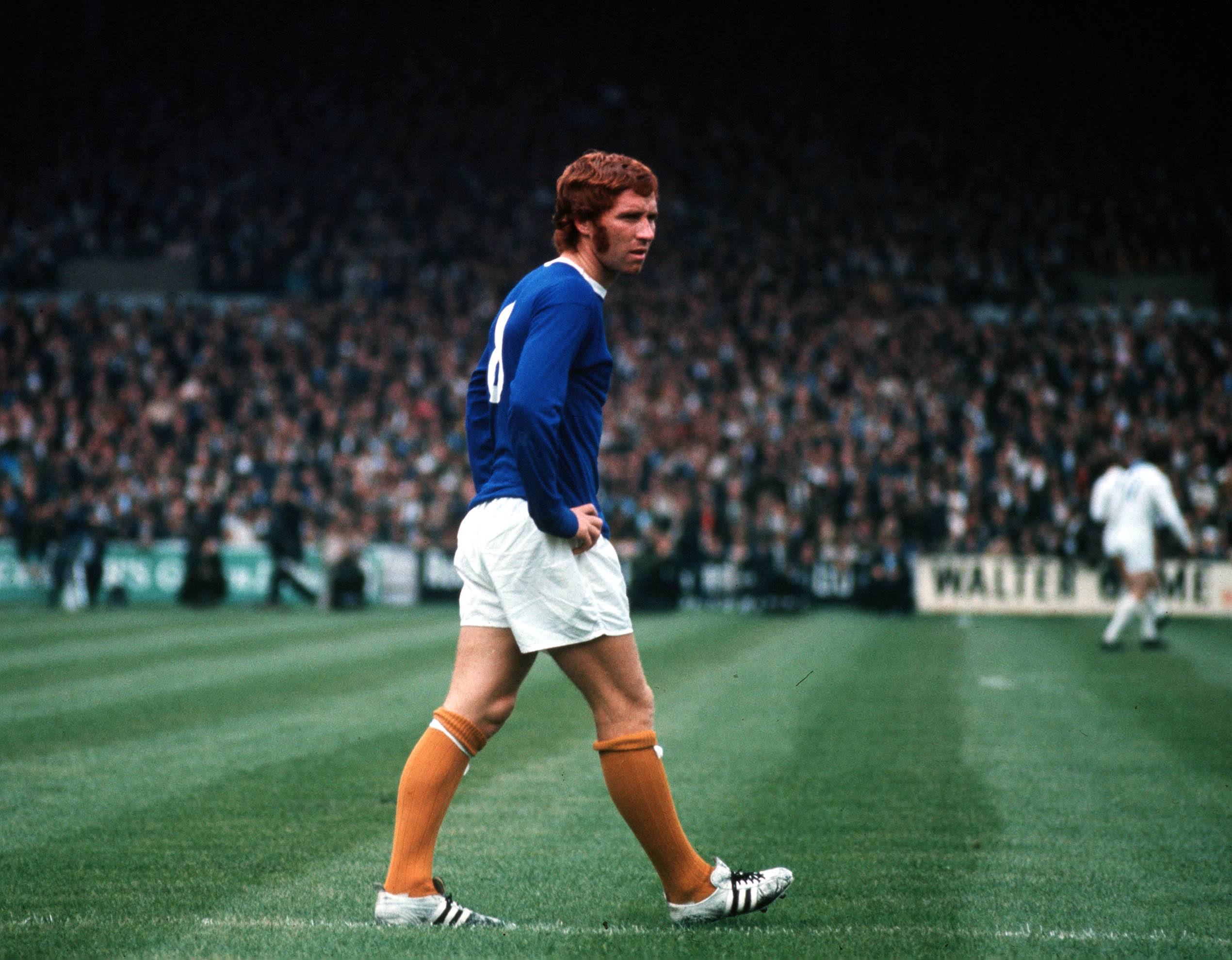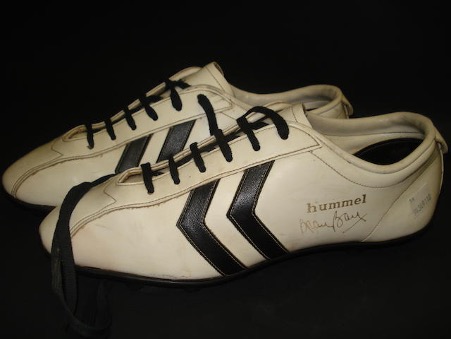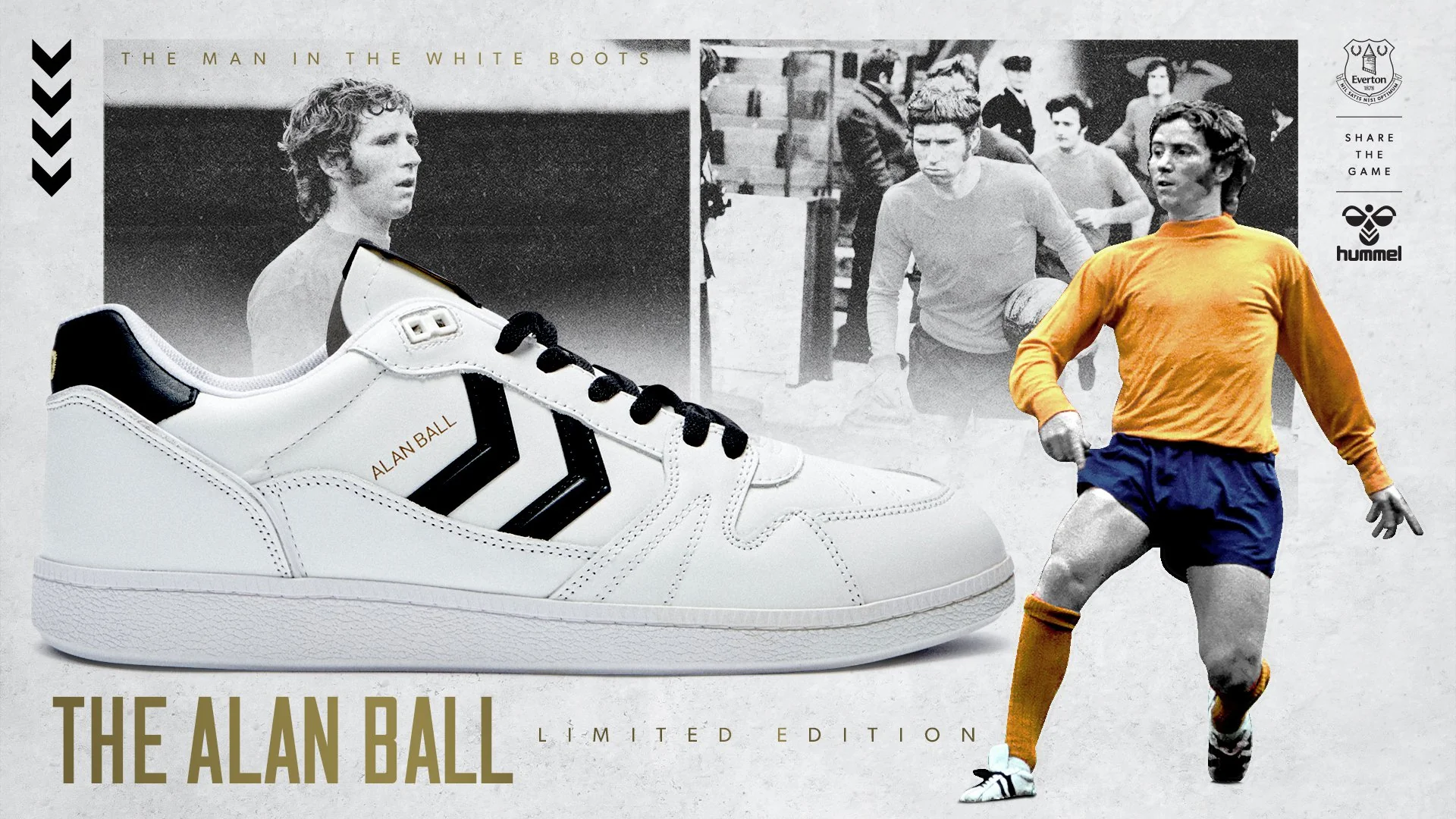The bright colored boots of today’s star footballers certainly wouldn’t have flown in the early days of the sport. We can trace back the innovation of boot color to one brand bold enough to try something new.
The African Cup of Nations (AFCON) is a few months away, and besides the wonderful vibes the competition brings every two years, one thing we look forward to most about it is the fantastic boots we get to see on the pitch.
From wild patterns to special edition customizations, our eyes are glued to what the players are wearing as much as they are to what they are doing on the pitch. Perhaps the foremost trailblazer of this trend is Ghana’s very own Anthony Yeboah, who donned a pair of flashy white boots in the 1994 installment of the tournament, the first to ever do so at AFCON and possibly on African soil.
Since that time, there have been plenty of innovations in the way of colors and more customization to suit players’ tastes. But before Yeboah, the genesis of the white boot trend has a tale that covers product innovation, market penetration, and product acceptance.
It all starts with Hummel, a German outfit that became Danish in 1956 after being purchased by Bernhard Weckenbrock. The brand was heavily into making boots and struggled to meet sales targets. adidas and PUMA dominated the boot landscape, and Hummel had a difficult time penetrating the market.
In 1970 however, the brand decided to deploy a maverick marketing tactic: the white football boot. After the Second World War, all football boots came in only two colors, either black or brown. A boot in white would shake up the market and differentiate the brand from its better-known competitors. Hummel signed one of the most popular players at the time, Alan Ball, to an endorsement deal worth £2,000 annually.
However, their new brand ambassador wasn’t enthused about the white boots Hummel produced for him because they didn’t quite match the quality of the adidas boots he was used to wearing. So Hummel improvised by painting Ball’s adidas pairs in white and then hid the trademark Three Stripes on the boots by repainting them to look like their Hummel brand logos.


Ball debuted the boots in the 1970 Community Shield game, where Hummel’s new white boots got free announcements throughout the game from the commentator and plenty of eyeballs to focus on them due to the fact that the cameraman focused on his legs whenever he had the ball.
The makeshift boots proved successful as Ball had a decent season in them. Hummel, whose highest annual sales figures hovered around 5,000 units until that time, sold 12,000 pairs in a month. Ball kept wearing the makeshift boots until Hummel provided one that matched the adidas quality.

Ball, who started his professional career with Blackpool FC and was youngest player in the 1966 England World Cup-winning squad, became a household name in Merseyside with Everton and is fondly celebrated in the club’s history.
As such, when Hummel got the opportunity to become Everton’s technical kit partner in 2020, they had to throw it back to the brazen marketing decision. Fifty years since the original white boots broke the necks of spectators across the world, Hummel dropped a street-ready sneaker version of the boots it made for Ball.

Revered as a vintage throwback, Hummel only made limited copies and retailed them within the price range of $346 to $426. It was a fitting tribute to Ball, who died in 2007 and will be fondly remembered for blazing the trail for the usage of fluorescent colors at the feet on the green pitch.








